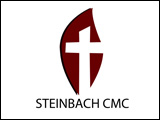The Government of Canada is helping livestock producers in Northern Manitoba and the Interlake and Westlake regions who are struggling as a result of excess moisture by offering tax deferrals to a number of municipalities.
“Our Government is committed to addressing the challenges faced by our Canadian farmers due to the extreme weather conditions they’ve had this year,” said Agriculture Minister Ritz. “This tax deferral program will help farmers in Northern, Central and Western parts of Manitoba who are struggling due to the wet and cold conditions we had in the spring and summer seasons by increasing the money available to replenish their breeding stock for the following year.”
The tax deferral allows eligible producers in designated areas to defer income tax on the sale of breeding livestock for one year to help replenish breeding stock in the following year. Proceeds from deferred sales are included as income in the next tax year, when they may be at least partially offset by the cost of reacquiring breeding animals. In the case of consecutive years of designation, producers may defer sales income to the first year in which the area is no longer designated.
To defer income, the breeding herd must have been reduced by at least 15 percent. If this is the case, 30 percent of income from net sales can then be deferred. In cases where the herd has been reduced by more than 30 percent, 90 percent of income from net sales can be deferred.
Eligible producers will be able to request this deferral when filing their 2010 income tax returns. Livestock producers are advised to contact their local Canada Revenue Agency Tax Services Office for details on the income tax provisions.
This preliminary designation has been established based on soil moisture and summer rainfall, supplemented with estimates of forage yield, and feed availability. Final decisions and any needed adjustments will be made when all the impacts of the excess moisture are known and when forage yield information is available. Early designation of eligible areas will help producers make informed decisions about their fall and winter livestock management decisions.
Northern, Central and Western Manitoba producers experienced excessive moisture and received higher than normal precipitations throughout the spring, summer and fall seasons. This disrupted or prevented seeding of annual crops, delayed early forage growth and resulted in producers being unable to cut available forage crops. Some were forced to sell part of their breeding herd to readjust the size of the herd to match the availability of feed supplies.
Assessment of the excess moisture situation will continue throughout the fall and, as more data about forage yields are known, tax deferral areas could be expanded.
In addition to tax deferrals, existing federal-provincial Business Risk Management programs, such as AgriInsurance (crop insurance), AgriStability and AgriInvest, will significantly help producers manage the impact of this natural disaster as the first lines of defence to address income shortfalls.
For more information on the extent of the excess moisture situation or programs to assist farmers, see the AAFC Drought Watch site at www.agr.gc.ca/drought.



